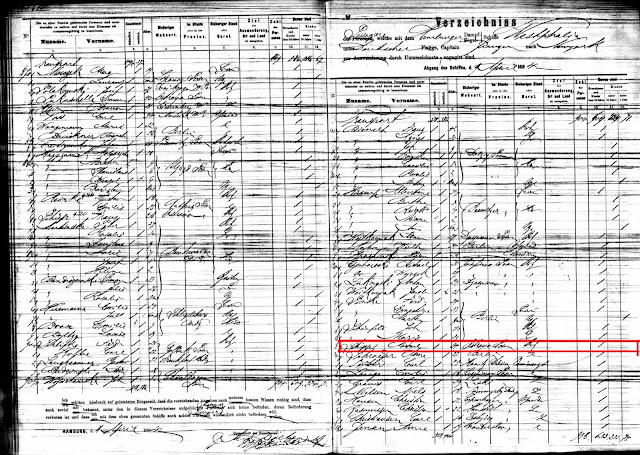It isn’t perfect, but Google Translate is helping me
understand my Polish heritage.
My genealogy focus in on heritage rather than merely on
lineage. I want to know how and where my ancestors lived. Google Earth has let me see the locations of
my ancestral villages and Street View has let me drive through them as they are
today. That’s the easy part,
The hard part is getting an understanding of these villages
as they were in the 19th century. I’m doing this by reading gazetteers
from that time. There are two of them.
This post looks at entries for Grabow nad Prosna, the village of my
Schipp ancestors in Poland.
Meyers Gazetteer of
the German Empire (commonly
called Meyers Orts) includes Prussian Poland where my ancestors lived. See below for links
to online access. It is in two volumes. The fifth edition was published
in 1915. The descriptions of small towns and villages are generally brief, but
include population broken down by religion, businesses, and facilities such as mail,
railroad and telegraph. Here’s the entry for Grabow nad Prosna. It is a three-pronged challenge
You can see that it is printed in old German Script.
Deciphering the script is the first challenge.
Once the script is decoded, the second challenge is the
abbreviations. Fortunately there is an
abbreviation table online. See link below. The
third challenge is the actual translation. I do not speak German. With the
combination of a good German/English dictionary and Google Translate, I get some
understanding of this town.
Among other things Meyers Orts tells me that there was a
dairy, a sawmill, and a railroad station that served both passenger and freight
customers and had a telegraph. There was one Protestant church and 2 Catholic
churches.
Słownik Geograficzny
Kólestwa Polskiego i innych krajów słowiańskich
(Geographical
Dictionary) is a gazetteer of Poland
“and other Slavic countries” published in 15 volumes. It is available online as are guides to its
use. See links below. Despite the complexity of the Polish
language, this is easier because it is printed in a normal font – I can
recognize the alphabet. But this one also has the challenges of abbreviations
and a language I don’t speak. The
edition I find online was published beginning in 1880 – it took a few years to
complete all 15 volumes.
The advantage of this gazetteer is that there is more
information in each entry.
This is just a very small portion of the entry in Slownik
Geograficzny for Grabow nad Prosna.
It describes the city of Grabow
on the Prosna river as being in a lush fertile valley. It says that the
residents were engaged in agriculture, cattle breeding, and smuggling in spite
of vigilant border guards.
The smuggling part sparks my imagination. Were my ancestors
law abiding farmers or did they make a little extra income on the side???
Grabow had a doctor and a pharmacy. It had once had iron
smelters and a Franciscan monastery.
The entry for Grabow nad Prosna is quite extensive and
includes some significant points of history going back to the year 1264.
Wow!
There are some words that I’ve not been able to translate
either using a Polish/English or Google Translate. That’s OK because I’m not looking for a
verbatim translation, I just want to get a sense of what the village was like
in that time.
Google Translate is more than adequate and is so very much
easier than looking up every word in a dictionary. Hooray for Google Translate.
If you know of other sites for gazetteers that may be
relevant, please leave a comment with a link.
Links:
Meyers Orts
Family Search
Note:
this version is searchable.
The Hathi Trust
Slownik Geograficzny
Polish Roots – this is the
easiest site for those of us who don’t speak Polish. There is a link to an
excellent guide to using this resource. The “How to Use” document on this site
gives detailed instructions for using the dictionary. The first link to an online version takes you
to the
University of Warsaw
site which is in Polish. If you use the Chrome browser it will give you the
option to translate. There is a list of abbreviations beginning on page 13 of
Volume 1. This list is crucial for
reading the entries.
WARNING: The pages of the
dictionary are in Java Script which is not supported by Chrome. I had to revert
to Internet Explorer to see the pages.
























